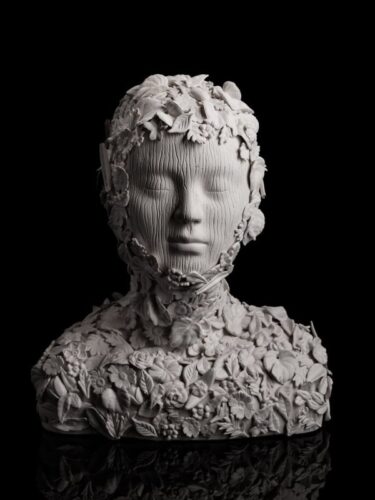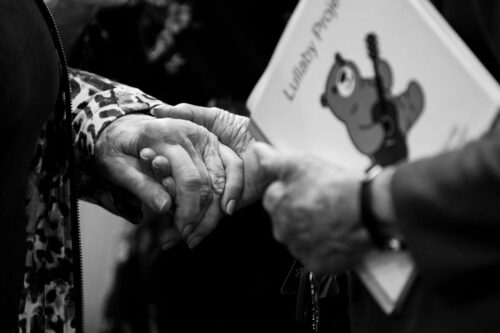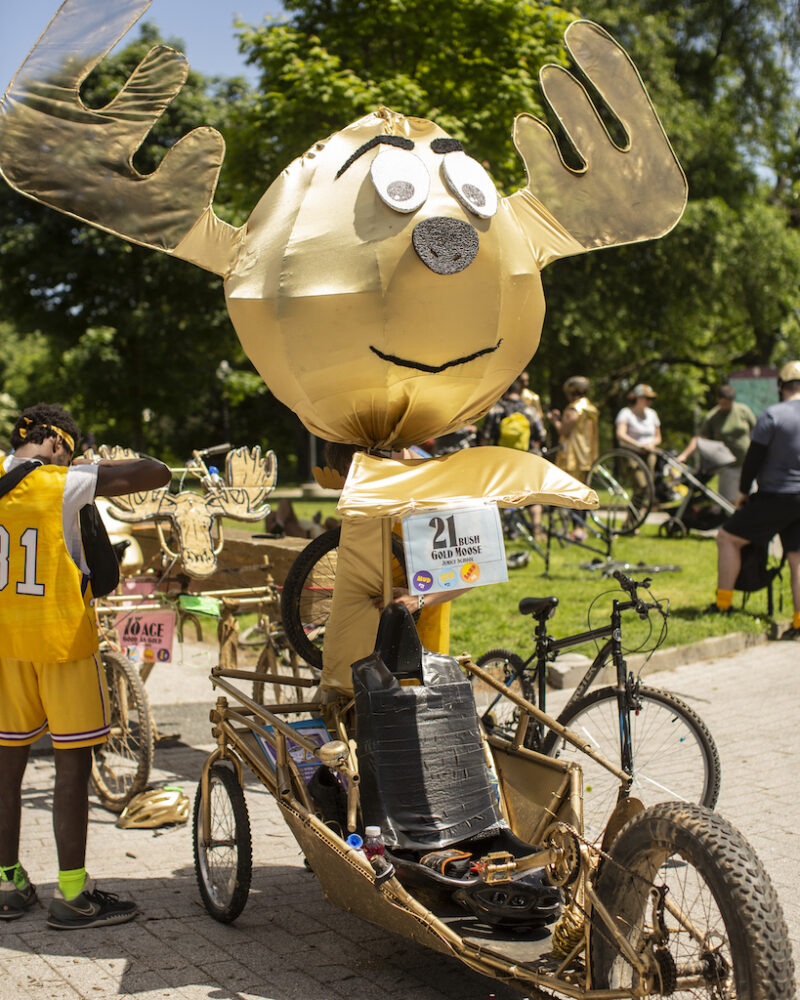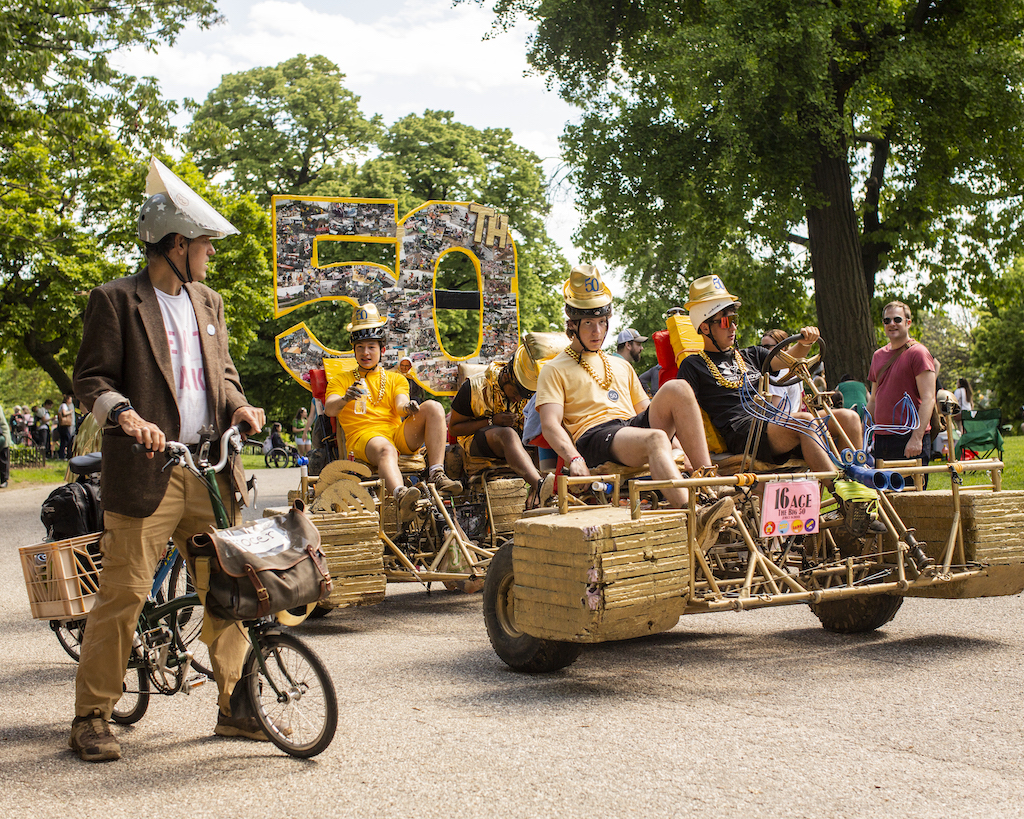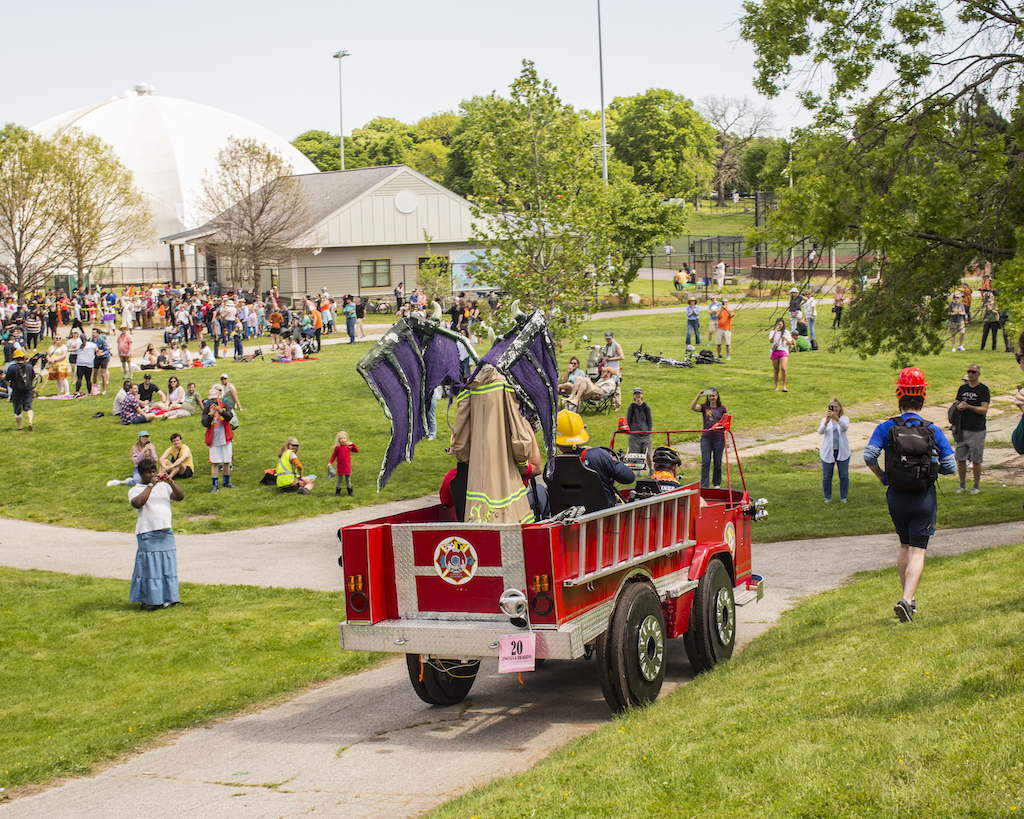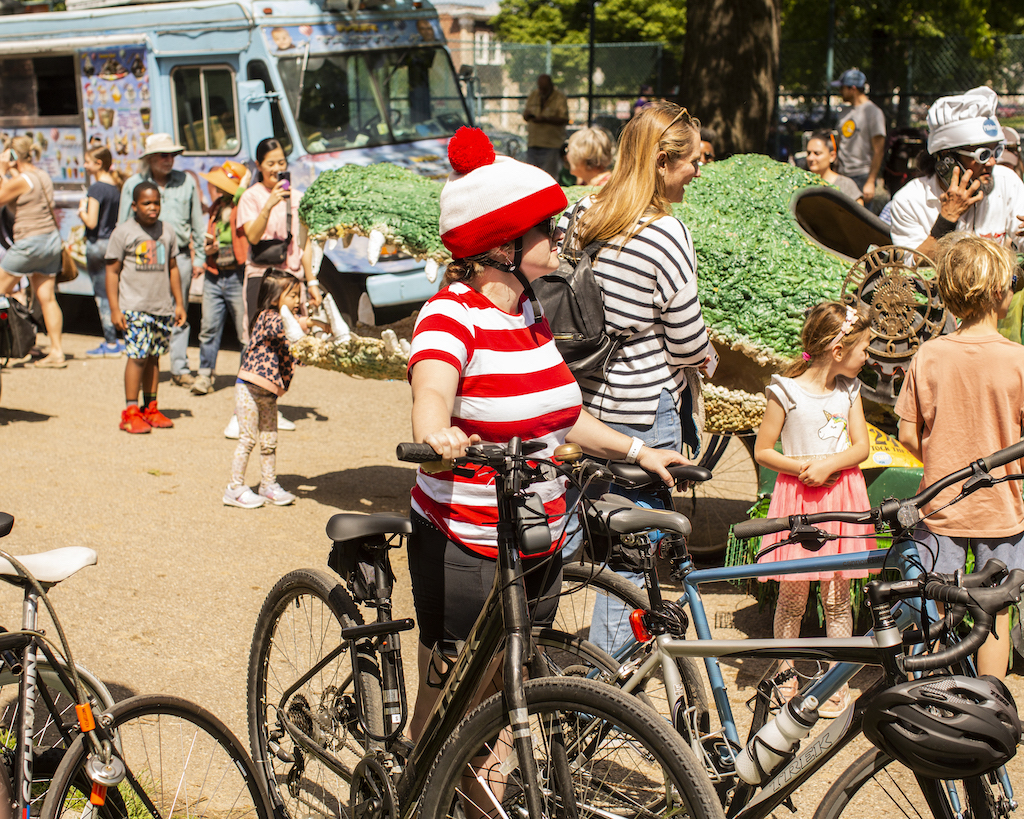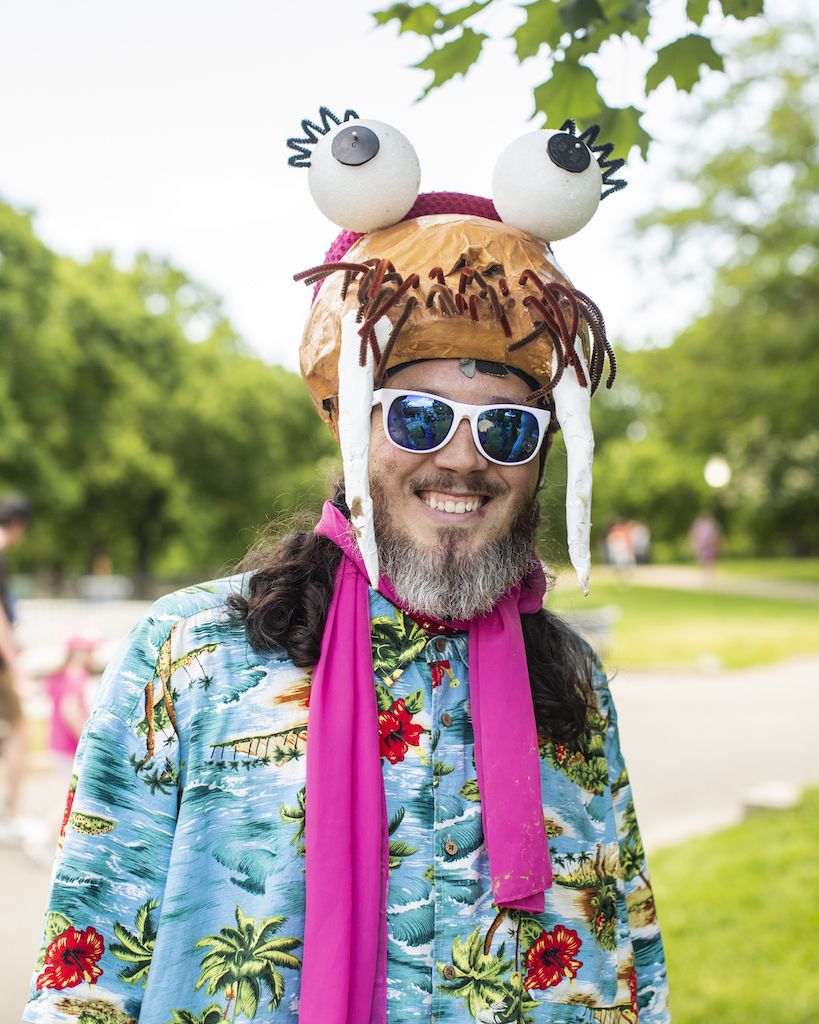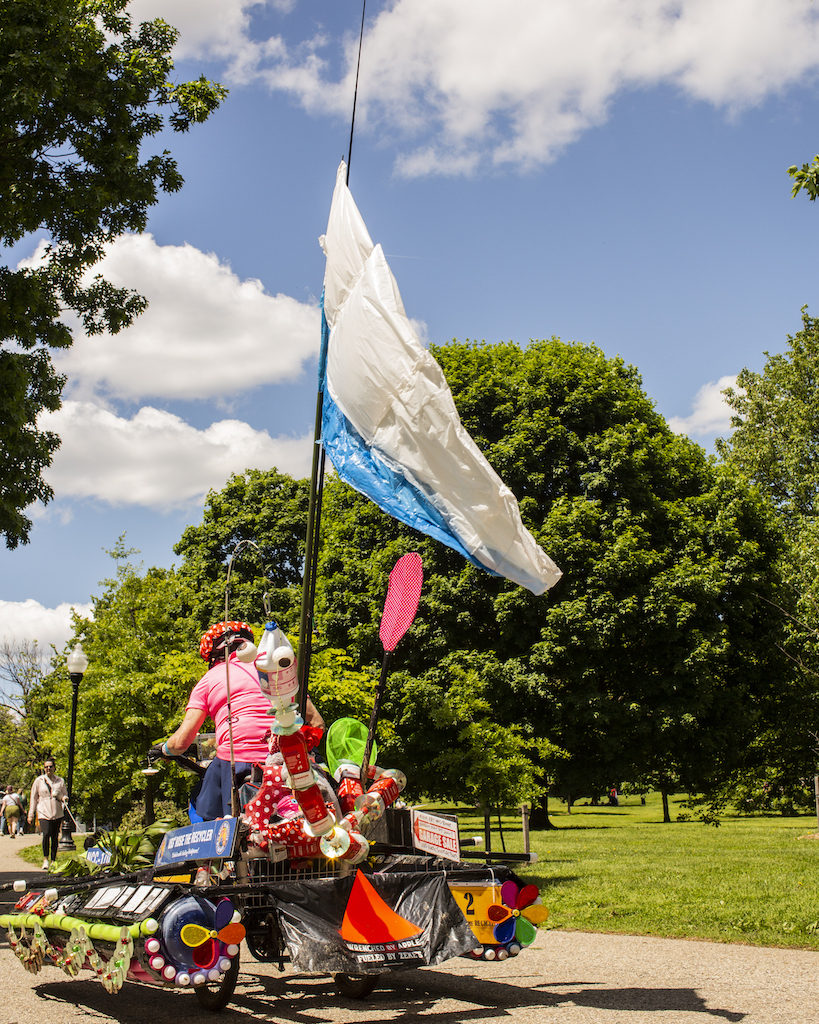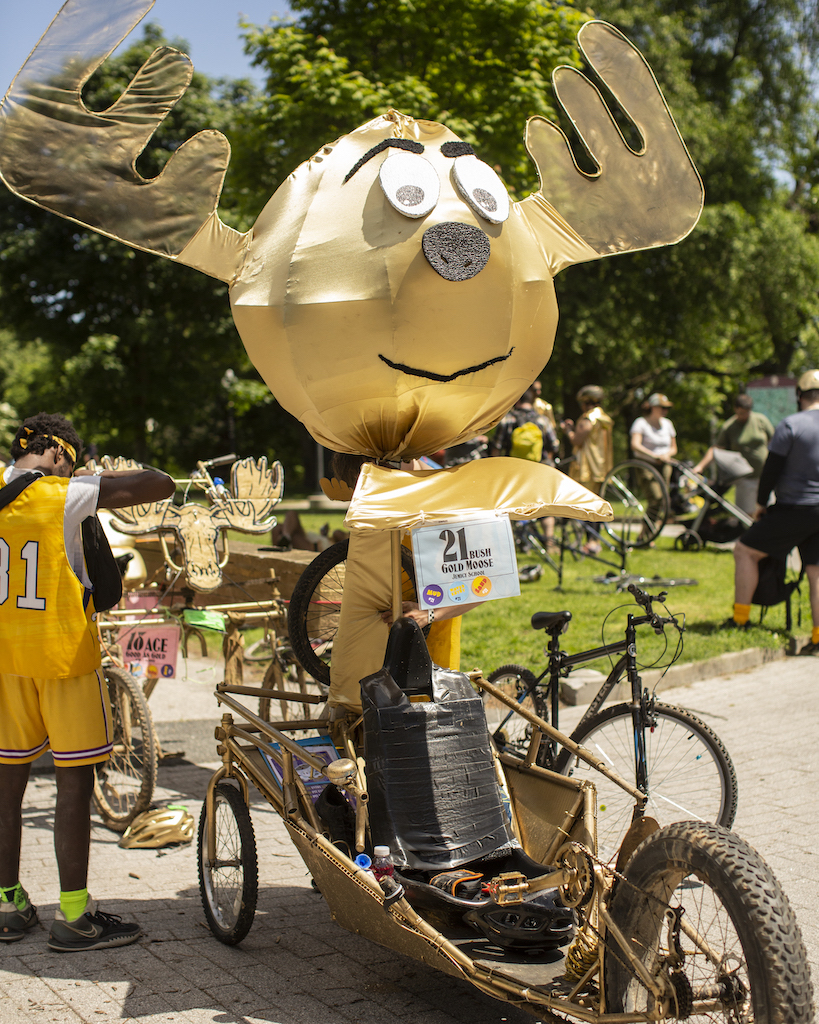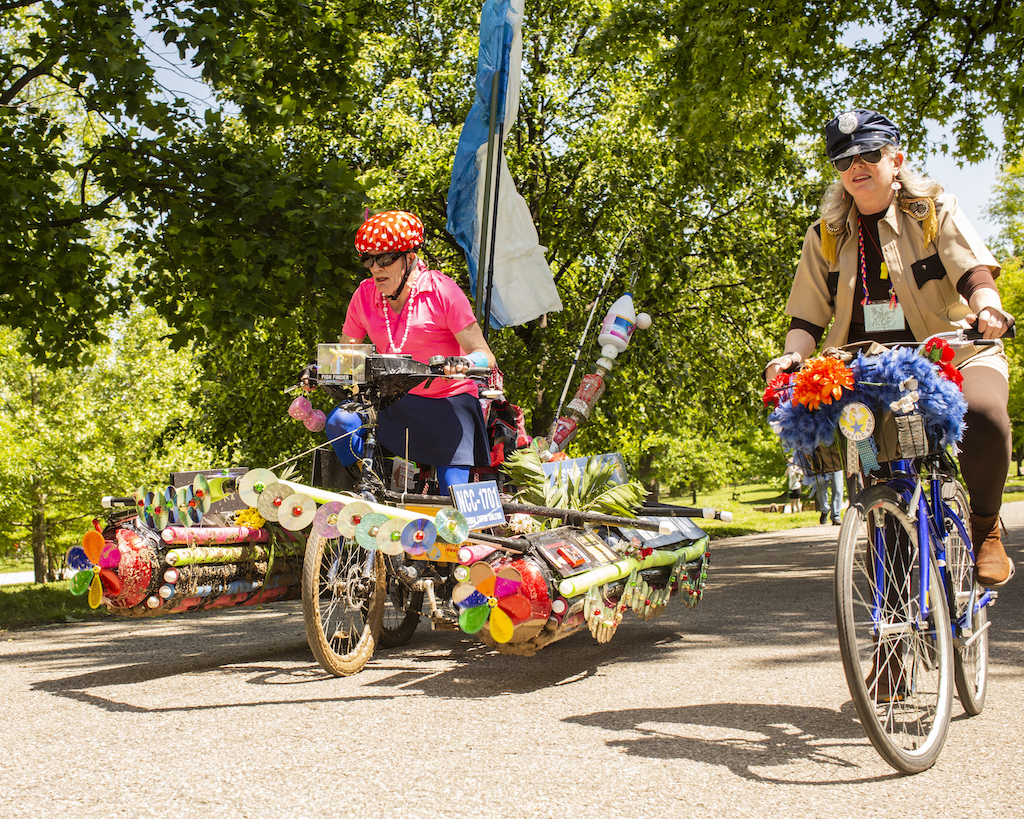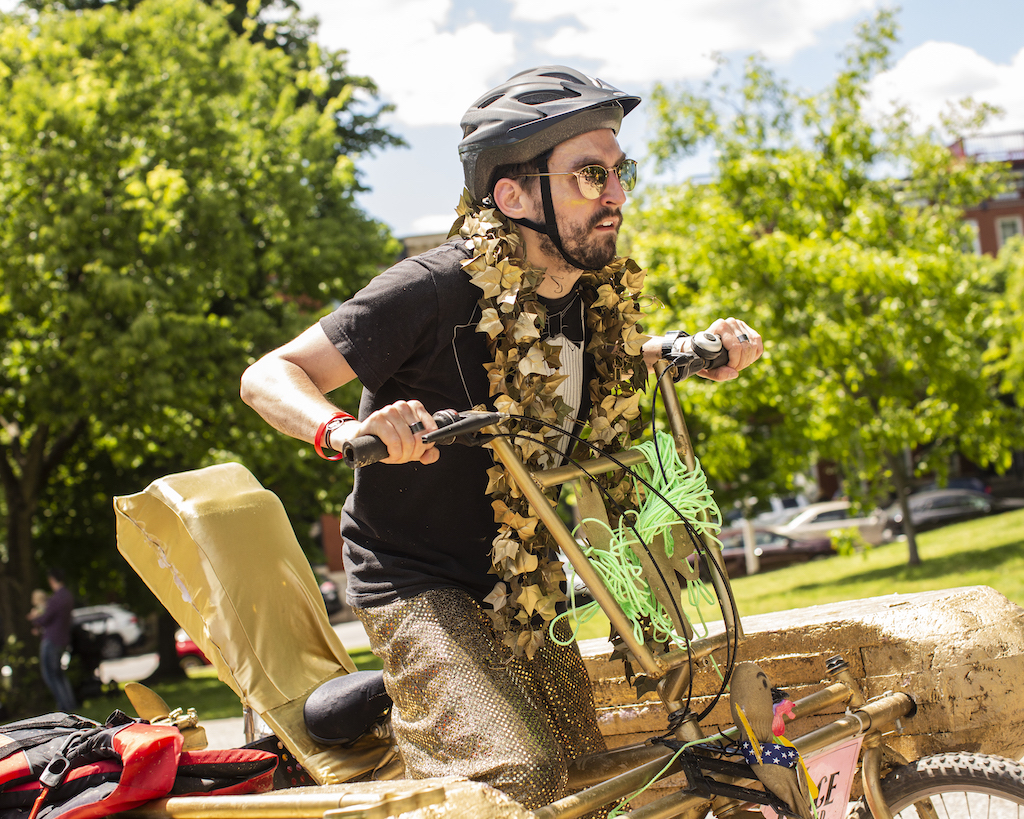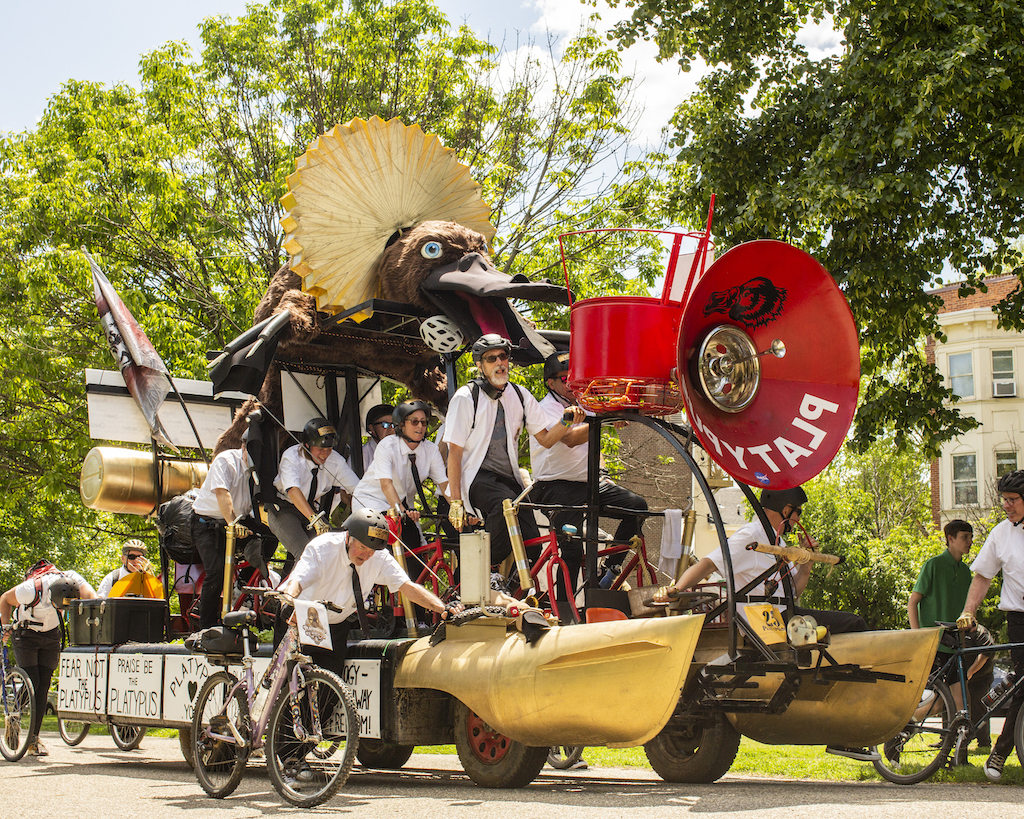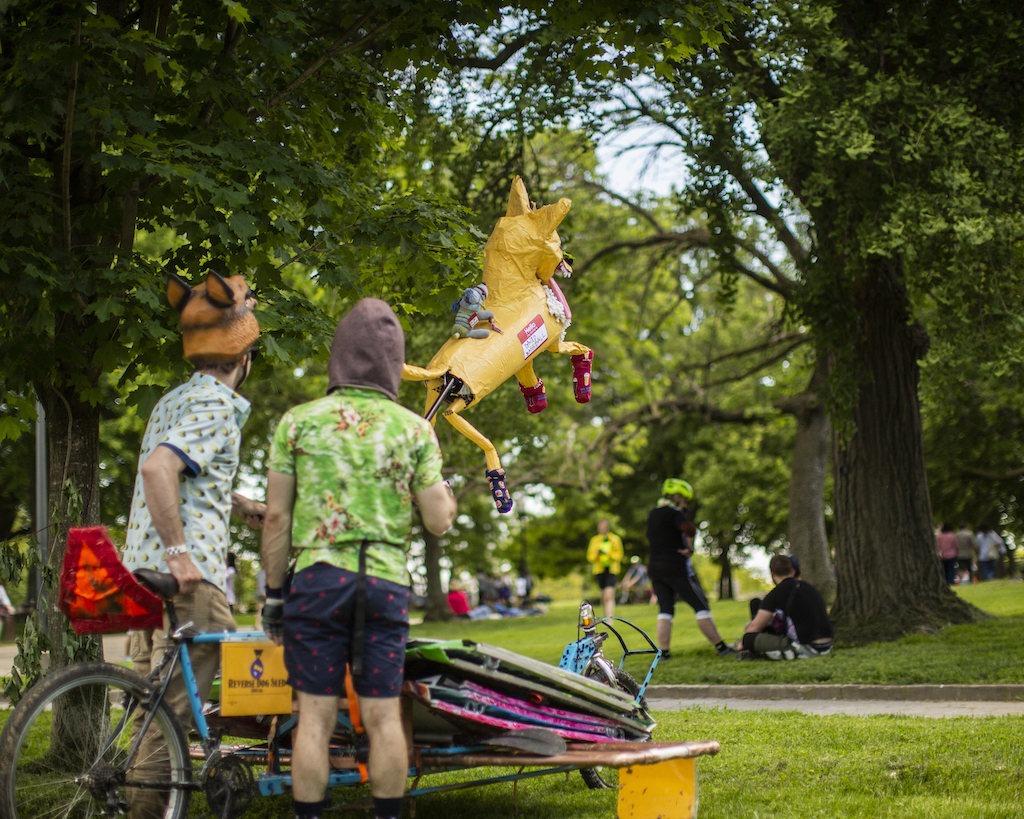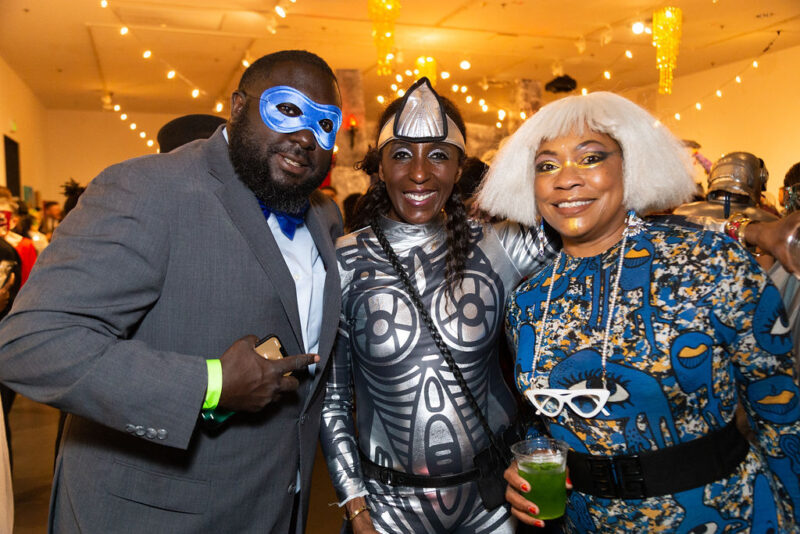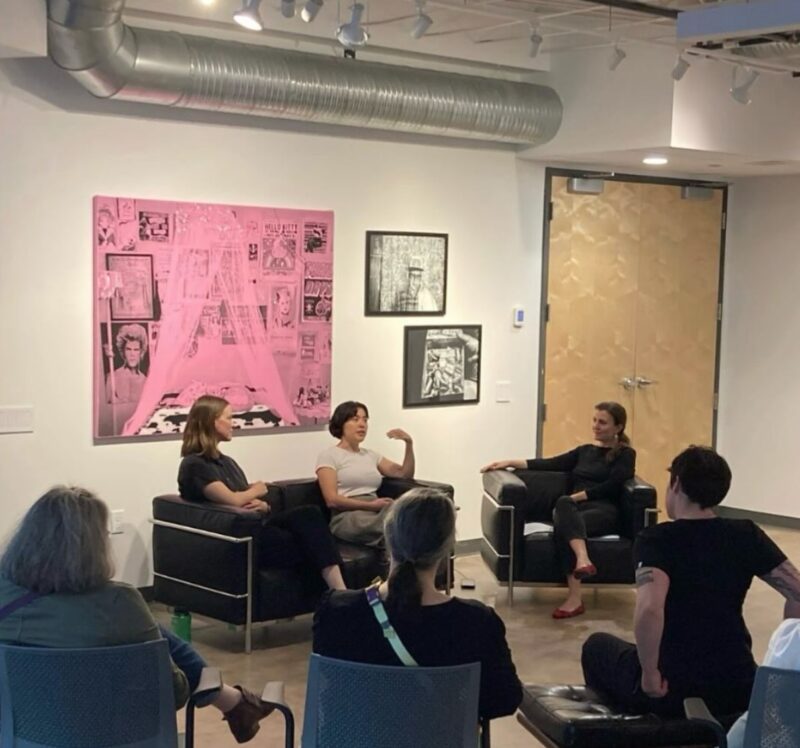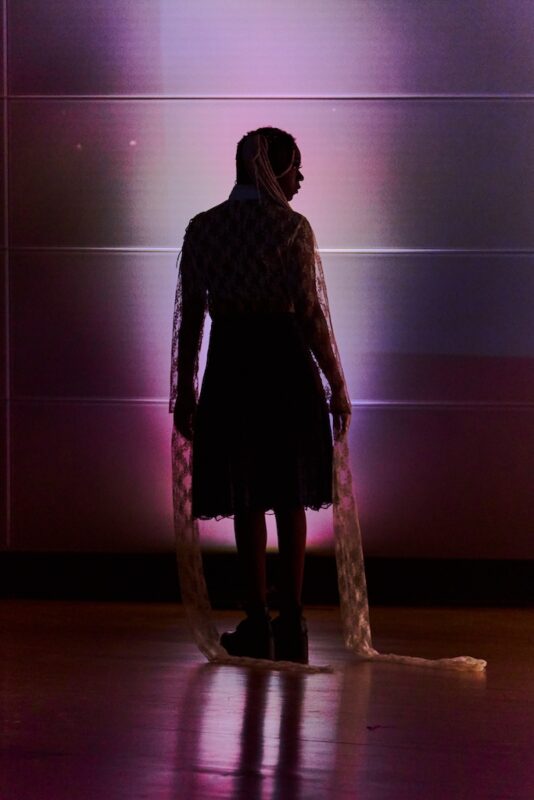According to the AVAM, Kinetic Sculptures are amphibious, human powered works of art custom built for the race. Each May, the American Visionary Art Museum (AVAM) produces and hosts the East Coast Kinetic Sculpture Race Championship on the shore of Baltimore’s Harbor in central Maryland. The eight-hour race covers 15 miles—mostly on pavement, but also including a trip into the Chesapeake Bay and through mud and sand.
Kinetic Sculpture Racing began in Ferndale, California in 1969 when artist Hobart Brown upgraded his son’s tricycle into a 5-wheeled pentacycle and was challenged to a race down Main Street. (Hobart did not win.) Over the decades since, the California race evolved into a 3-day all-terrain Kinetic Grand Championship including treacherous sand dunes, water crossings, and elaborate sculptures and costumes.
The Baltimore Kinetic Sculpture Race came back in person Saturday, May 6. Opening ceremonies began at AVAM at 9:30 a.m., the race started at 10 a.m., with most teams crossing the finish line between 3:15–4:30 p.m.
Please enjoy Jill Fannon’s photos of a variety of kinetic sculpture racers as they gear up for a day at the races.
